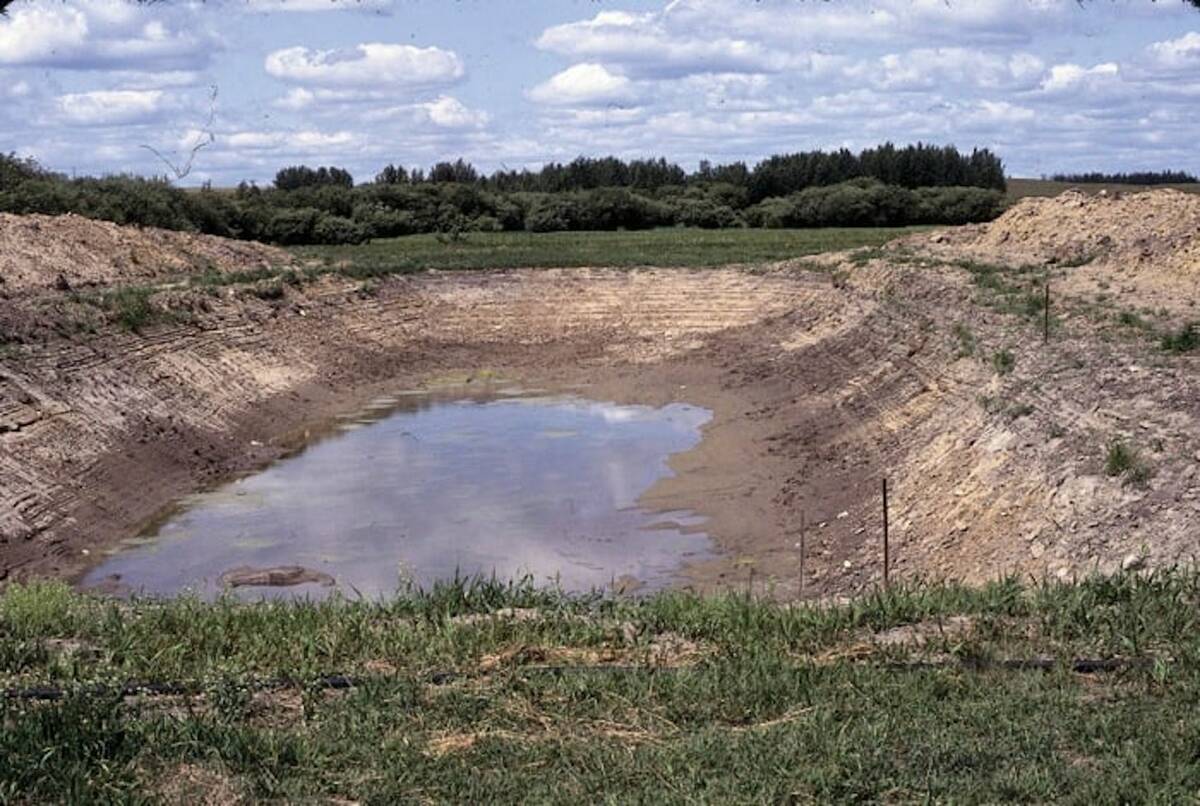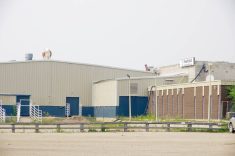IDDESLEIGH, Alta. – Youngs-town rancher Tim Andrew says in most cases it’s pure luck if people spot a burrowing owl.
The diminutive owls that live in abandoned badger holes across the southern prairies were one issue raised during a recent meeting in this southeastern Alberta community. About 100 ranchers gathered to discuss their concerns over pending environmental legislation like the federal endangered species law and the provincially led Special Places 2000 program.
The burrowing owl has been officially listed as endangered since 1995. Before that it was listed as a threatened species in Canada and it has had full protection under Alberta’s Wildlife Act since 1985.
Read Also

Dry summer conditions can lead to poor water quality for livestock
Drought conditions in the Prairies has led to an decrease in water quality, and producers are being advised to closely monitor water quality for their animals.
Keep information quiet
Ranchers acknowledge if they find burrowing owls on their property they’re reluctant to reveal the whereabouts of the birds to the public or government.
Ranchers like Andrew are concerned that attempts to preserve habitat could jeopardize the livelihoods of people who make a living off the same land.
At the meeting, ranchers said if the public knows where the birds live, too many people will want to explore the pastures. Well-meaning observers could scare off the owls or damage the fragile ecology of native range, they said.
“If you target one species like the burrowing owl, then it is more likely to disappear,” said David Scobie.
He is co-ordinator for the Operation Grassland Community, based in Brooks, Alta. He said some people who volunteered to participate in Operation Burrowing Owl dropped out of the program because they fear the uncertainty of the endangered species act. Landowners and renters worry they could lose access to land if it’s known to be the habitat of an endangered species.
Operation Grassland Community comes under the wing of the Alberta Fish and Game Association. It provides protection to wildlife through Operation Burrowing Owl, the prairie loggerhead shrike recovery team, as well as programs to monitor some endangered amphibians and reptiles.
There were 243 farmers and ranchers in Operation Burrowing Owl. Less than 20 percent reported seeing the owls last year. Scobie said some participants report the owls’ presence but won’t reveal the location.
The province has pressured Scobie to release data on where the owls live for a wildlife survey, but he has refused to do it without land-owners’ permission.
The Eastern Irrigation District, Alberta’s largest private landowner, has rejected a request to scout for burrowing owls on its land.
Location not revealed
The district’s board turned down a request last year from a University of Calgary graduate student who wanted to study burrowing owl sites on grazing land. He also wanted to map the owls’ location and make the information public. That could lead to restrictions like fencing areas to keep cattle out to protect the owls’ habitat.
Jim Webber, manager of the Eastern Irrigation District, said until the board knows the implications of the endangered species act, it won’t allow such activities.
“There is very little data out there and that is one of the biggest problems, is that you have an act that is very aggressive and politically correct. You really have no information to work on which makes it somewhat dangerous because people may then misapply it,” said Webber.
“You start to wonder how the endangered species act will be interpreted by government agencies or by the public sector … and restrict the way we do business on that land today,” he said.

















